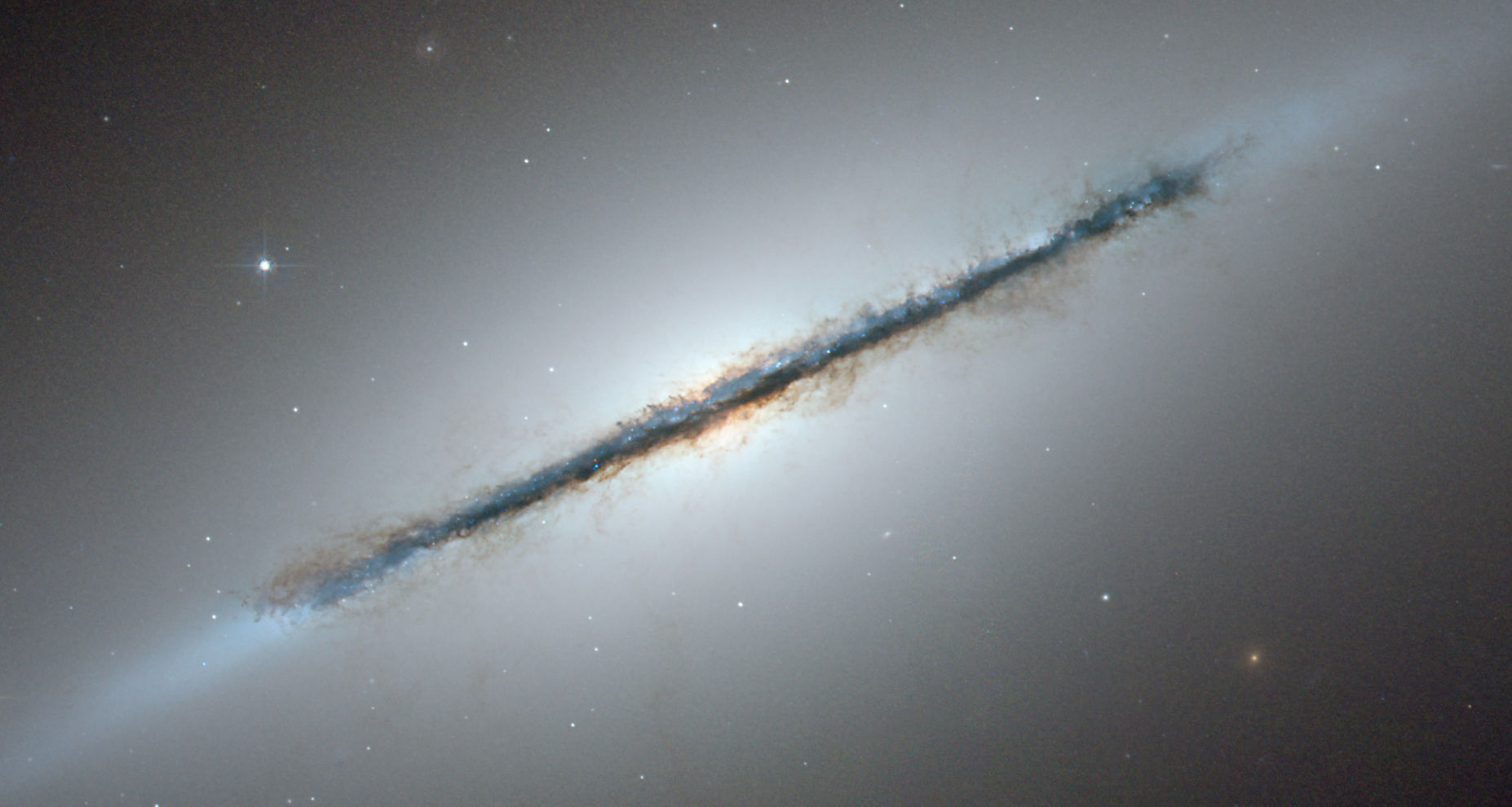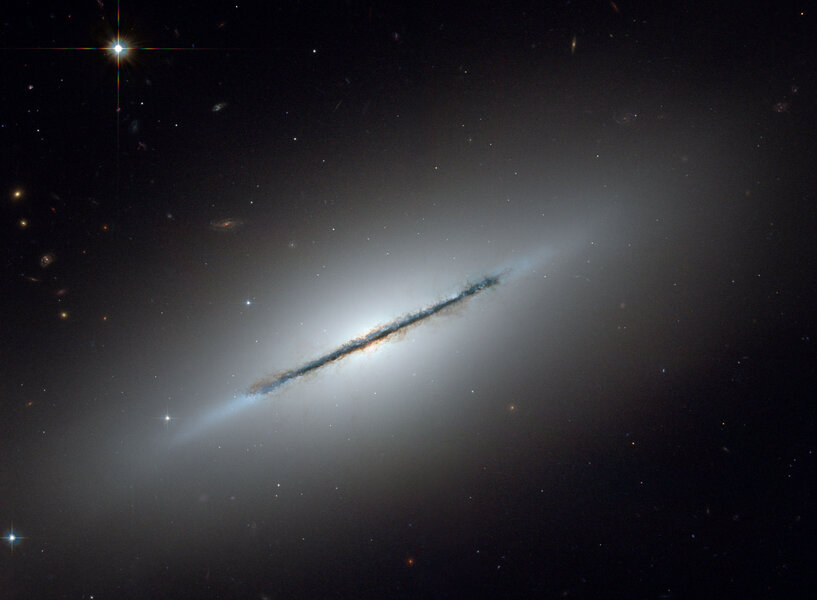Create a free profile to get unlimited access to exclusive videos, sweepstakes, and more!
NGC 5866, an edge-on galaxy, shows off its spectacular dust lane

I am only human, so of course I love big, splashy, spiral galaxies. I’ve certainly posted enough gorgeous images of them, some with their spiral arms flung wide, some wrapped tightly, some with smooth arms, some patchy and flocculent.
What we see when we look at these spirals depends a lot on the angle we see them. Some are almost exactly face-on, so we can peer into them easily and deduce what’s happening. Some, like M31, the great Andromeda Galaxy, are more severely tilted to our line of sight, and harder to investigate.
And then there are the ones that are almost exactly edge-on. These can be pretty mysterious. Some features of them are obvious, others hidden… and some can seem downright tricky.
Like NGC 5866, aka M 102. If I weren’t a soberly rational scientist, I’d wonder if maybe someone built it, decided they made a mistake, and then used a strikethrough to note they were trying again:
That’s a Hubble image of the galaxy, and it’s presented in pretty much natural color: red is red, green is green, and blue blue. And that in itself shows us a mystery.
OK, but first to acknowledge the elephant in the room: Look at that dust lane! Holy wow! That’s made up of countless clouds of tiny grains of rock and carbon molecules. Some of these clouds are small but many are huge, dozens or even hundreds of light years across. This material is opaque, so it blocks the light of stars behind it, creating this magnificent silhouette. I’ll get back to it in a second, because this all ties together and I need to tell you some stuff first.
NGC 5866 is a disk galaxy, what’s called an S0: It’s midway between a spiral galaxy with those amazing arms, and an elliptical galaxy, a generally featureless puffball of a galaxy. Besides the shape, these two classifications of galaxies have another major difference. In spirals, star formation is actively ongoing, and in ellipticals it’s long stopped.
Stars that are massive and bright are blue, and don’t live long. These dominate spiral arms, so spiral galaxies look blue. But in ellipticals, which haven’t made stars in a long time, these massive blue stars are ancient history, long gone, so ellipticals tend to look red.
S0 galaxies are a hybrid. They’re flat, but in general don’t make stars. That’s because usually they have very little or no gas and dust in them. Many of these S0 galaxies are found in massive clusters of galaxies, and we think they stars off as spirals. But as they move through the cluster the gas between galaxies blows the internal spiral galaxy gas out, like opening a window in a moving car can help air out a foul odor. This removes the gas, and voila. No more star formation.
And that brings me to the mystery of NGC 5866: The disk is blue. That’s weird. That means it’s still making stars, and therefore still has gas. Studies show it doesn’t have much, and forms stars very slowly, but it still does make them. And that dust lane makes it clear it hasn’t lost all its stuff.
It gets weirder: NGC 5866 is not in a cluster. In fact it’s in a fairly isolated region of space where there aren’t even that many galaxies (galaxies in those environments are called field galaxies). So it has the raw material it needs to make stars, but it just… doesn’t make them. Why not?
One team of astronomers supposes it may be due to its gas halo, the gas surrounding the galaxy. In lower mass galaxies, the gas can fall into the galaxy itself, pile up, and form stars. But if the galaxy is more massive it has more gravity, and pulls that material in faster. This is like turning on a faucet too fast; water can’t drain out of the sink fast enough to accommodate the water coming in, and it spills over. In this case the gas piles up outside the galaxy, and can’t get into the galaxy proper. Without that extra gas, the galaxy can’t continue to make stars, so the star birth rate falls.
That’s an oversimplification — there are lots of other factors involved — but that may be the issue with this galaxy. It is making stars, just at a slower rate; the Milky Way makes on average about one star per year; NGC 5866 is a twentieth of that.
I’ll note that when you look closely at the dust, you can see streamers and filaments reaching up and down into the disk. The small ones may be from supernova explosions driving the material away; some are far longer and may be due to blowouts, where big bubbles of material erupt away from places where lots of stars are formed in one spot. That means they’re old, since stars aren’t being made too much anymore.
So all the parts here connect — there’s some gas and dust, but not enough to make lots of stars, but still enough to make some so the disk looks bluish, but not enough to make coherent spiral arms, but still enough to affect the dust and push it away from the disk. But from the papers I read the connections here are all a little tenuous, and we can’t be sure this is what’s going on.
The good news is NGC 5866 is pretty close — about 40 million light years — making it easier to study in detail. In fact it’s bright enough to see with a small telescope, and since it’s edge-on the light is concentrated, making it easier to see. I can’t believe I’ve never gone for it before myself! It’s up nice and high in the constellation of Draco in the late spring, so I think I’ll remedy this situation, and see if, by eye, it looks as weird as all the data suggest.
















